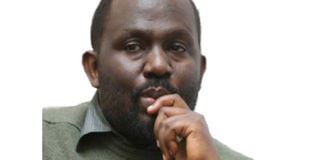How Kenya’s Supreme Court became first in Africa to overturn presidential election

On September 1, Kenya’s Supreme Court overturned the August 8 election of President Uhuru Kenyatta, and ordered that a new vote be held within 60 days.
Following the August 8 election, opposition leader Raila Odinga filed a challenge in the Supreme Court, alleged the vote had been rigged. The court, however, ruled that President Kenyatta’s hands were largely clean.
While presidential results have been overturned in Africa before, they have been by military juntas or pro-government courts, egged on by an incumbent refusing to concede defeat to the opposition – for example - in Nigeria in 1993, Madagascar in 2002, and Ivory Coast in 2010. In Madagascar and Ivory Coast, after skirmishes and even war, the initial winners eventually got their crowns.
The September 1 Kenya verdict was therefore historic, as it was the first time in Africa a court ruled against the electoral victory of an incumbent and ordered a new election, based on a court petition by the opposition.
Question then is, how did Kenya get to that point? The common answer being thrown around is that it is because Kenya’s Judiciary is independent in ways most of its African peers, barring South Africa, are not. However, that is like saying eggs come from the supermarket. You might buy your eggs from the supermarket, yes, but they come from a chicken farm somewhere.
To understand the “shocking” Kenya Supreme Court verdict, one needs to go back to the political farm.
First, the political cost of annulling the August 8 election was, in reality, quite low. With the 2010 constitution that created and highly decentralised key functions to 47 counties and powerful governors, there is less of a political crisis and vacuum if the president in Nairobi is hobbled.
Secondly, Kenya has several fall back positions.
A key pillar of the State, the military, in Kenya is fairly professional and non-partisan. While different presidents have always appointed “their men” to the top positions of the Kenya Defence Forces (KDF), over the last 20 years, at the core it has evolved into a force for stability.
Judges can rule against a president’s election knowing they will not emerge from the court to find a tank pointing its turret at the door, as would happen in quite a few countries.
Still, how did all those things become possible?
Its roots go back to how the pro-democracy movement evolved in Kenya during the Cold War and into the 1990s, heralding the end of one-party rule and a return to multiparty politics.
Partly because of how it has urbanised, the structure of agriculture and land ownership, and the nature of its food market with ugali as its staple, guerrilla war is a much more difficult form of resistance than in Uganda, for one.
But it makes for very effective civil society mobilisation, and Kenyans mastered it like perhaps only two other countries have on the continent.
The fight for reforms and political change in Kenya was thus carried out by a wide front of civil society groups working with opposition parties, while in East Africa in Burundi, Rwanda, Uganda, Ethiopia, South Sudan, it was via armed struggle.
An armed struggle is destructive, but offers many benefits too. It uproots the old regime and its structures more completely, allowing the victors to start on a clean slate and make far-reaching economic and social reforms, if they are so inclined.
But because in the end it is bullets, not philosophical arguments about the nature of the State, that win, they tend to recreate the old state with a benign face – not a totally different one. Thus presidential power will usually remain quite concentrated at the centre. The path Kenya took is longer, though fewer people die.
Thus by drip, drip civil society-cum-political action, culminating in the 2010 constitution, Kenyan power suffered a level of philosophical attack its African peers have not. The Kenyan presidency has thus been hollowed out substantially, although outwardly it does not appear so. Also, one of the failings of Kenya is its widely panned “tribal politics”. It would be wrong to totally dismiss tribal politics in Kenya and elsewhere in Africa, because just because a party is ethnic, doesn’t mean it lacks democratic content.
Nevertheless, because in the last two decades Kenya’s parties have tended to be largely ethnic or regional, they remain mainly unable while in power to totally dominate the State and the country the way the ruling National Resistance Movement (NRM) does in Uganda, SWAPO in Namibia, or UNITA in Angola, to name a few. That weakness, on the plus sides, has allowed state institutions greater wiggle room for independence. The ethnicised nature of Kenya politics is, therefore, both a curse and a blessing.
•This is an abridged version of a longer commentary published on Roguechiefs.com.
Mr Onyango-Obbo is the publisher of Africa data Mr Onyango-Obbo is the publisher of Africa data visualiser Africapedia.com and explainer site Roguechiefs.com. Twitter@cobbo3




